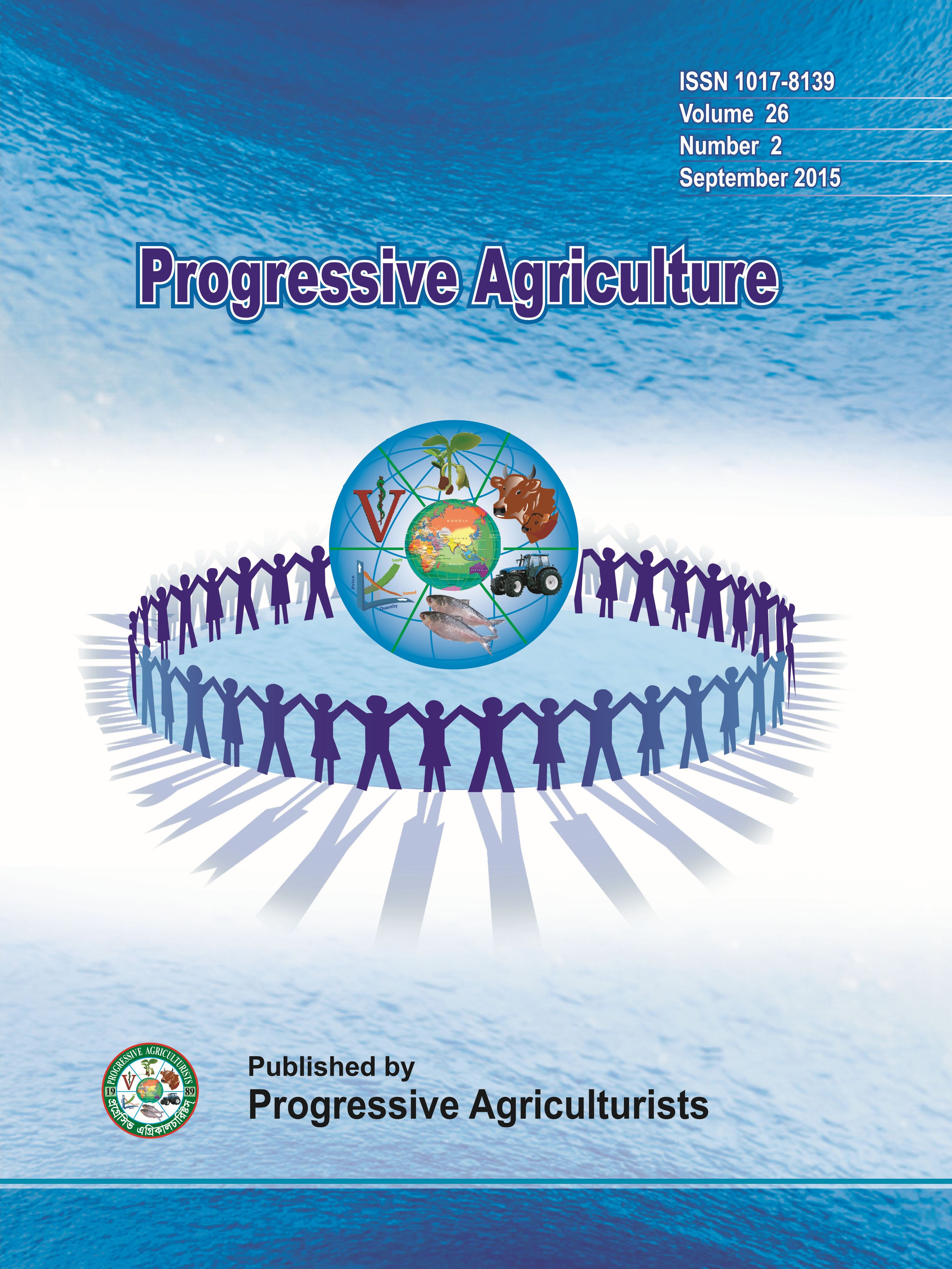Techno-economic performance of 4-row self-propelled mechanical rice transplanter at farmers field in Bangladesh
DOI:
https://doi.org/10.3329/pa.v27i3.30834Keywords:
Fuel consumption, missing hill, labor requirement, yield, economicsAbstract
Mechanical transplanting is an emerging technology in Bangladesh agriculture. Deadong DP480 rice transplanter was used to conduct the experiment which is imported from South Korea and China. The performance of this machine needs to be thoroughly investigated in local condition. This experiment was conducted in Boro (2015) season in the farmers field at Gosaidanga in Shailkupa upazila under Jhenaidah district and at Rashidpur in Mithapukur upazila under Rangpur district. Two treatments, i.e. T1 = Hand transplanting (HT) and T2 = Mechanical transplanting (MT) were used in the experiment. The experiment was carried out in randomized complete block design (RCBD) and replicated in six plots in each location. Rice variety BRRI dhan28 was used to conduct the experiment in both locations. Fuel consumption of 4-row walking type mechanical transplanter obtained 5.25 L/ha. The field capacity and field efficiency of rice transplanter obtained 0.11-0.12 ha/hr and 64-70 percent, respectively. Conventional seedbed preparation required 37-55 man-hr/ha whereas 71-77 man-hr/ha required in mat type seedling suitable for mechanical transplanting. Labor requirement in hand and mechanical transplanting ranged from 123-150 and 9.0-10.5 man-hr per hectare which was 19-22 and 1.65-2.00 percent of total labor requirement in rice cultivation, respectively. Number of seedling tray requirement ranged from 215-230 per hectare. Calibration should be done on space and seedling density setting before operation in each plot to get optimum plant spacing and seedling tray requirement. Missing hill obtained 1-2 percent in mechanically transplanted plot. Mechanically transplanted plot showed significantly the higher grain yield (9-14%) than hand transplanted method due to use of infant seedling. The input cost in the form of labor and material was found similar in hand transplanting whereas in mechanical transplanting, labor cost found 12 percent lower than material cost. The cost of growing mat type seedling for mechanical transplanter found 53 percent whereas the cost of raising traditional seedbed found 34 percent of the cost of hand transplanting. Mechanical transplanting reduced 1.8 percent input cost than hand transplanting in crop cultivation. BCR of MT and HT showed 1.18-1.19 and 1.03-1.06, respectively. Mechanical intervention in crop production drastically reduced the labor requirement which can offset the peak labor demand. Mechanical transplanting systems increased yield, improved labor efficiency, ensured timeliness in operation and faster transplanting.
Progressive Agriculture 27 (3): 369-382, 2016
Downloads
218
209

